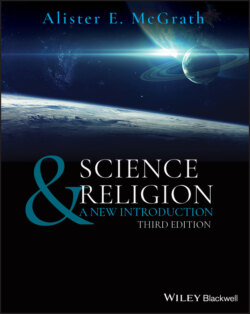Читать книгу Science & Religion - Alister E. McGrath - Страница 15
Science and Religion Offer Distinct Perspectives on Reality
ОглавлениеThe first analogy invites us to see science and religion as offering distinct perspectives on a complex reality. I shall explore this approach as it is presented in the writings of Charles A. Coulson, one of the pioneers in the dialogue between science and religion. Coulson was Professor of Theoretical Chemistry at Oxford University and author of Science and Christian Belief (1955), an influential account of the relation of the natural sciences and Christianity.
Coulson was an enthusiastic mountaineer and illustrated his approach with the Scottish mountain Ben Nevis. Coulson invited his readers to join him in an imaginative walk around this mountain and reflect on how the mountain appeared when viewed from different angles of approach. Seen from the south, the mountain presents itself as a ‘huge grassy slope’; from the north, as ‘rugged rock buttresses’. Regular visitors to the mountain are familiar with these different perspectives. ‘Each looks at the mountain; each sees certain things and each tries to describe his encounter with the mountain in terms that make sense. Each devises a language that is suitable for his particular purpose.’ The complex structure of Ben Nevis cannot be grasped fully from any single angle of approach. ‘Different views of the same reality will appear different, yet both be valid.’ A full description requires these different perspectives to be brought together, and integrated into a single coherent picture. The whole is the sum of these multiple perspectives.
It was a simple analogy, and it is easily applied to the relation of science and faith. Coulson's core insight is that ‘different viewpoints yield different descriptions’. A scientist, a poet, and a theologian each offers a distinct perspective on the complex reality of our experience. Each describes what they see using their own distinct language and imagery. For Coulson, this shows the need for an overall, cumulative, and integrated picture of reality, with both science and religion offering their own perspectives, each of which is valid yet incomplete.
The human experience of reality is complex, and there is space for both scientific and religious approaches to grasping that reality. ‘The two worlds are one, though seen and described in appropriate terms; and it is only the man who cannot, or will not, look at it from more than one viewpoint who claims an exclusive authority for his own description.’ Coulson recognized that some scientists and theologians claimed their own insights represented a monopoly on truth. His view, however, was that they both offered partial insights, which needed to be woven together into a more complete and reliable picture.
This is a helpful approach. However, it offers a somewhat flat account of reality. Many would argue that reality is multi‐layered, and that each of these layers needs to be explored in a distinct way, adapted to its characteristics. This leads us neatly into the second approach we need to consider.
